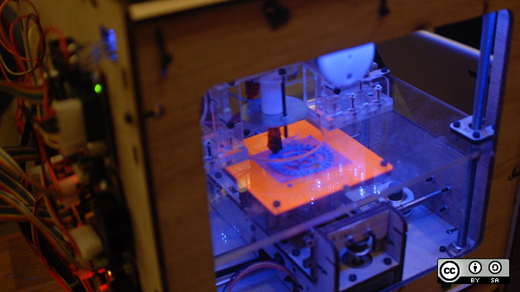Do you remember HeathKit? The company that sold circuit board and resistor kits you could assemble to make your own electronics?
Building a HeathKit was no great feat of engineering—it came with a fixed list of parts and the schematic—but it helped you understand how electronics work by letting you assemble your own electronic products. And back in the day, a well-built HeathKit radio was every bit as good as the store-bought ones.
HeathKit fell by the wayside as the complexity for products increased, and the quality difference between what you could buy commercially and what you could build yourself became too large, but thanks to the popularity of publications like MAKE magazine, and an increase in the availability of specialty electronic parts and open source software, a maker renaissance has begun.
And when the maker mentality pairs up with recent developments in hardware—like the success of Arduino, an open source electronics prototyping platform—I have to wonder if conditions are right for a maker-minded, open design hardware community to stake a claim in the consumer manufacturing landscape.
Software has laid the philosophical foundation for open source design
The success of Linux and other open source tools has demonstrated that certain classes of software deliver greater functionality and value through a collaborative, open development process. Not only has it been proven that these open source software platforms can add value, but there are even examples, like Red Hat and Springsource, of profitable businesses who publish only open source software. These companies give the product away for free and make money by providing support, services, integration, and community for that software.
The growing acceptance of open source software products presents an interesting question for hardware manufacturers—could a growing hardware maker community create similar value in open design hardware? Is there a class of products for which the open design model is better than the proprietary development model?
Open design hardware dominates in some unusual places
At first glance, it would appear that Arduino stands alone as a model for open source hardware design, but there are other markets where mass-produced, open design hardware has succeeded, and even dominated. For instance, the M1911 pistol—the classic “Colt 45”—has been produced worldwide using an open design for decades. Similarly, the AK-47 submachine gun was designed in Russia, but is now produced worldwide from readily available specifications.
The success of the open design model in the gun market is informative. For better or worse, guns are in wide demand all over the world, and if you looked at other markets where there is global demand for a high-value product—like high-tech electronics—you might expect the gun market to be dominated by a few global suppliers of proprietary products who achieve tremendous economies of scale (think of Apple, or IBM, or Cisco in hardware). Two characteristics make the gun market special: an overriding need for standardization and support for local manufacturers who are too small to develop proprietary designs. Standardization is required because guns have to be compatible with a standardized component—ammunition—and because armies want to minimize their training costs. And nation-states have a very strong interest in supporting a “local” gun industry because they generally don’t want to rely on others for their guns.
Other than guns, there are examples of successful open designs in the form of standards-based products in some commodity functions—like plumbing—where there is relatively little opportunity for innovation and where the market demands a standardized device that just works in existing infrastructure. When a market relies on mechanical interchangeability of simple hardware in a very large installed base, the benefits of open design outweigh the benefits of proprietary solutions.
Will open design supplant proprietary design in new markets?
The fact that open design hardware has dominated specific, niche markets is proof that it can work commercially—it’s just a question of the market fit.
For example, the open design approach may not ever be appropriate for brand name, mass-produced, electronic consumer products. In this case, the economies of scale and required level of design integration are probably not achievable by an open design community with limited resources.
However, if we got to a point where high-quality open designs could be easily fabricated and produced by many manufacturers, this could be a successful model in markets where product utility is more important than style and where economies of scale are not too great. For example, there have been successful open design products in the developing world for products such as water pumps and systems for water purification. There is an opportunity to cultivate an entrepreneurial manufacturing community in the developing world through the production of these kinds of open design products.
Another place where this model might work is being demonstrated by sites like Kickstarter, where some companies have successfully paid for product development and manufacturing through pre-committed orders. To place a pre-committed order, a customer has to believe that the delivered product will really work. The transparency of a community-backed open design could provide the “product credibility” needed to enable manufacturers to use the pre-committed revenue model more broadly.
For example, if you had a machine shop, you could publish a catalog of community-created open designs and allow pre-paid demand to drive your production schedule. This would be a great way to get interesting, innovative products to the customer as needed.
Because really, who wouldn’t want one of these?






1 Comment